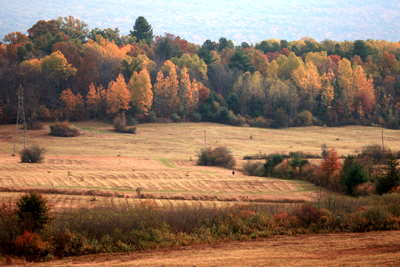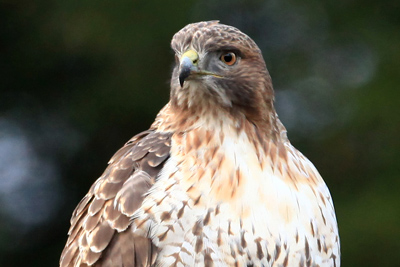
The Thanksgiving season is a time to reflect on blessings that may get overlooked. In terms of hidden treasures at Amherst, the college has one that is quite large, actually. While the natural beauty of Amherst College is apparent to anyone who has spent time on campus, there’s more to it than the quad’s canopy of trees and the view of the landscape over Memorial Field.
About half of the College’s 1,000 acres is a protected wilderness—comprised of open fields, wetlands, river, ponds and woodland habitats— open for recreation and research.
The story goes that in 1929, Charles Andrews, treasurer for Amherst College, was out gathering pine cones for kindling when he hit upon the idea that cleaning and beautifying land along the college’s eastern border—60 acres purchased some years before—might be a good way to provide wages for students in need of financial aid. In 1933, students and residents set to work cleaning up the woods. With the undergrowth cleared away, a natural arboretum was uncovered, boasting rich soil and a diverse assembly of indigenous plants.

Professor Alfred S. Goodale, head of the College botany department, oversaw the first conservation work on the land, which included clearing brooks, establishing two ponds, and developing hiking trails. It was the start of the Amherst College Wildlife Sanctuary.
Over the years, even larger parcels of land to the south and west, including former pastureland rented out by the college, were cleared of invasive plants to establish a grassland bird habitat.
This area is home to more than 100 tree swallow nest boxes, which are used for faculty and student research projects. The sanctuary provides an open-air laboratory for teaching and research. Here Amherst students and faculty can study the plant, insect and bird life that abounds in these fields and forests.

Accessible via the Norwottuck Rail Trail as well as entrances at South East Street, College Street and South Pleasant Street, the land features a network of trails, including a cross-country trail loop in the west fields, and the Emily Dickinson Trail, which runs south of the Fort River. Sanctuary trails offer good views of the Holyoke Range and the college’s main quad. White-tailed deer frequent the western fields, and during the spring migration, strollers along the Emily Dickinson Trail have observed blue-winged warblers, field sparrows, brown thrashers and eastern bluebirds.
The Amherst College Wildlife Sanctuary is administered by a stewardship committee which includes members of the faculty, students, the director of facilities planning and management, the grounds supervisor, and other staff members.
Have you seen anything wild and beautiful in the sanctuary? Send your pictures and observations here.